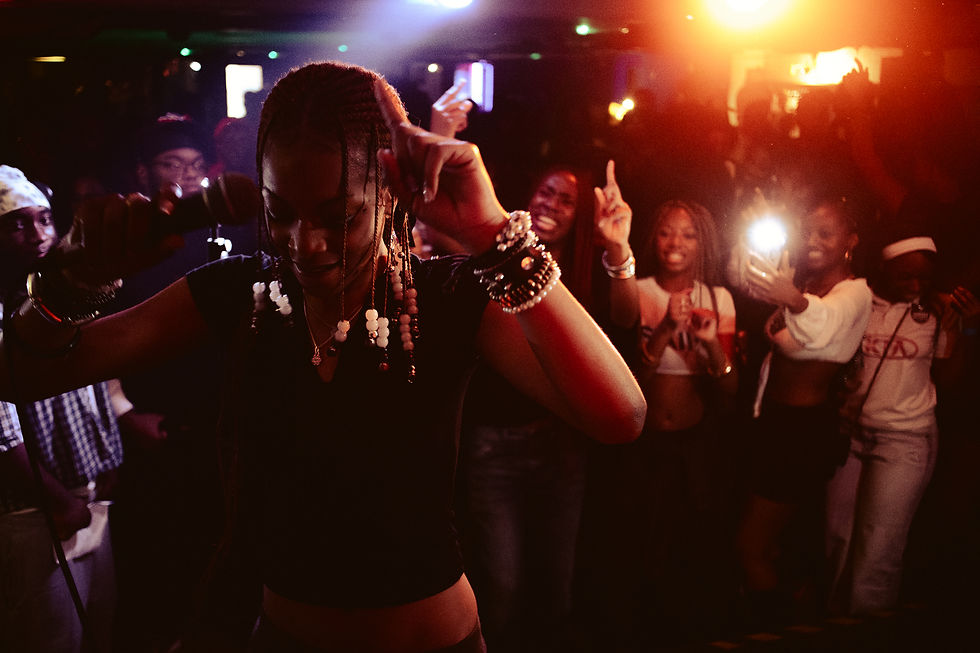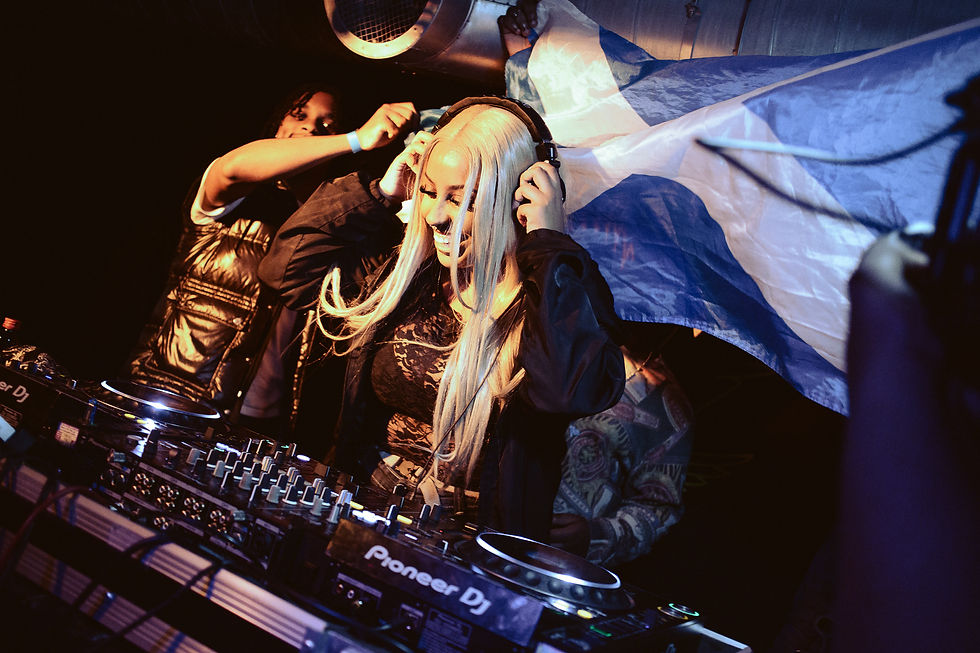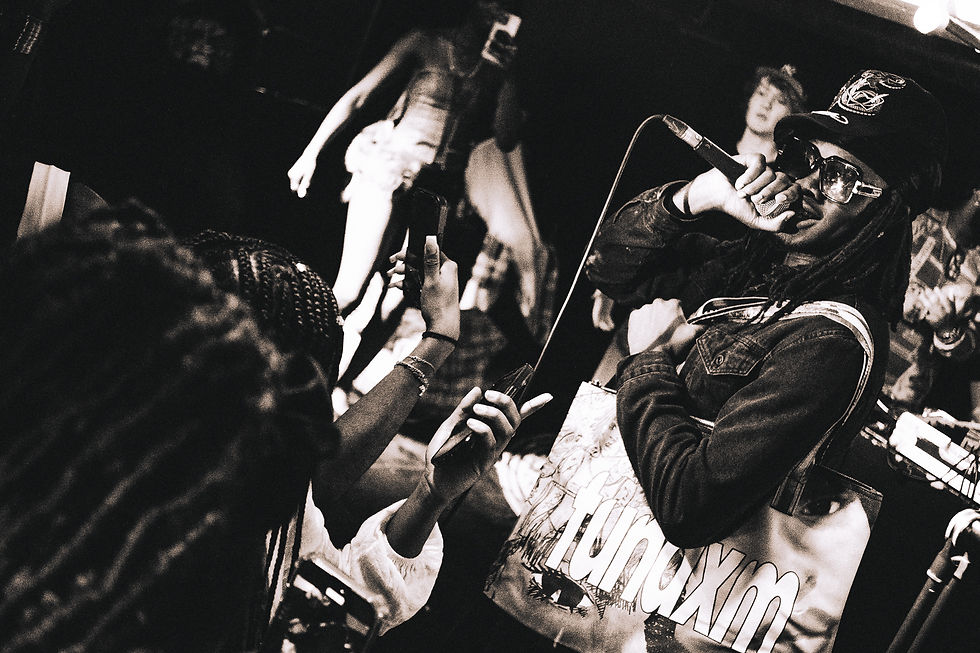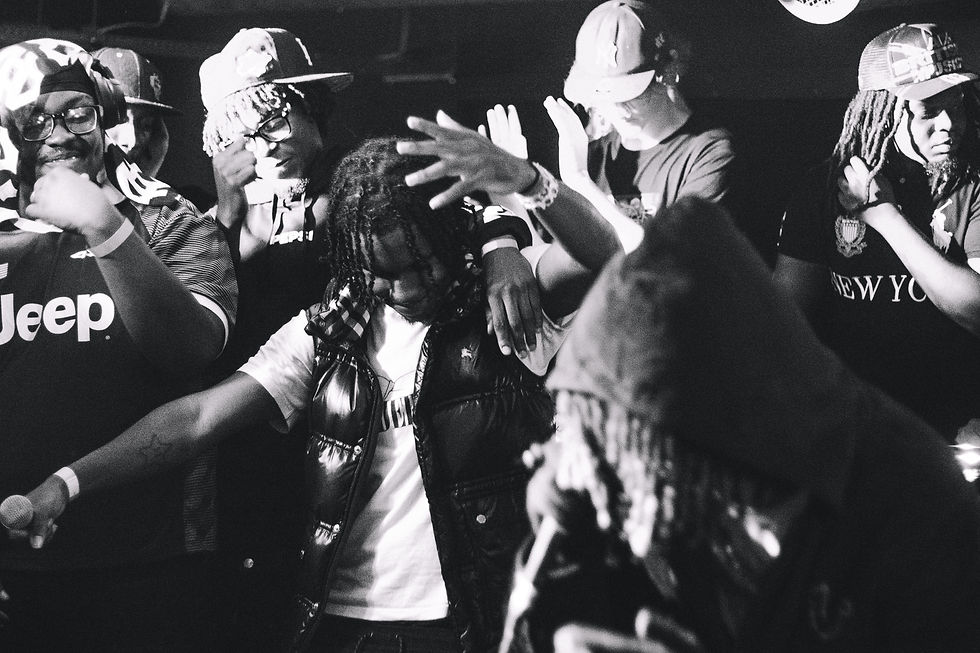HDAY’s Soundscape: Mapping Movement, Community, and Connection
- Zhakiya Sowah
- Aug 12
- 3 min read
The beauty of HDAY lies in its various entry points. You might have come because you heard Leah GTE is down from Scotland, or because you caught wind of Tundxm’s pop-up and wanted to see his new pieces in person. Maybe it’s Ceebo’s set that pulled you there, or the quiet rumour that Onoola Sama’s in town from Canada. Whatever brought you into the room, HDAY gave you a reason to stay.

HDAY as an entity operates as a network and a point of convergence where separate but overlapping scenes temporarily connect, exchange ideas, and then disperse again. These linkages are not imposed by the event but already exist in the everyday practices of the artists, DJs, and audiences involved. By bringing them into the same physical space, HDAY strengthens these connections, making the flow of influence and collaboration more visible while allowing the network to retain its decentralised, non-hierarchical structure.

On a sonic level, Grime bleeds into Bouyon, Rap into Afrofusion, Dancehall into Drill. One moment, bbshka is leaning into a bassline that feels like it could belong to three different genres at once, the next, Sald3e pulls the crowd sideways into something between Julrity and Kaytranada. It’s hard to place, but instantly familiar. The DJs here aren’t just selectors, they’re connectors. They are people who already live at the intersection of multiple sonic worlds and present them by folding them together for the audience. In doing so, they reinforce the social and creative linkages that make HDAY less a single event and more an active node in an ongoing, decentralised network.

The night doesn’t try to streamline those connections for you. It resists it. What’s happening here is legible only if you accept overlap, contradiction, moments that don’t resolve into a clear narrative. There’s no single “sound” of HDAY; what links things together is the way they pass between hands and ears, and the way the room shifts in response. You can feel that in the crowd, someone catches a lyric, turns to a friend, and they’re both suddenly somewhere else in their heads, remembering a completely different night, a completely different song.
You could see it when N4T and Ciel dropped their dancehall track Everybody Know. The track itself is a meeting point. N4T, a British-Ghanaian artist, and Ciel, a British-Jamaican, layer a sound that’s unmistakably dancehall but also unmistakably UK underground. As they performed, that blend became physical in the room. The crowd’s movement shifted in response to what the collaboration represented: a live negotiation of identity, culture, and sound crossing diasporas laterally rather than fitting into neat boxes.

London has always been a place where cultural lines blur, but HDAY feels like an amplified version of that. That multiplicity carries into the way the night is built: the same person you see behind the decks might also run a zine, shoot music videos, or design graphics for half the lineup. The people making this scene aren’t just specialists, they’re already embedded across it.
The organiser, hklivingg, has assembled a bill that feels less like curation and more like mapping that traces the existing lines between artists, DJs, crews, and audiences, then drawing them into the same physical space. Project400’s set tugged in people who know them through their music.





![Frame of Mind with hklivingg: Documenting Culture in Real Time [Interview]](https://static.wixstatic.com/media/1779fb_afedc4e585c549528f28f5a14c446dad~mv2.png/v1/fill/w_980,h_1530,al_c,q_90,usm_0.66_1.00_0.01,enc_avif,quality_auto/1779fb_afedc4e585c549528f28f5a14c446dad~mv2.png)
Comments